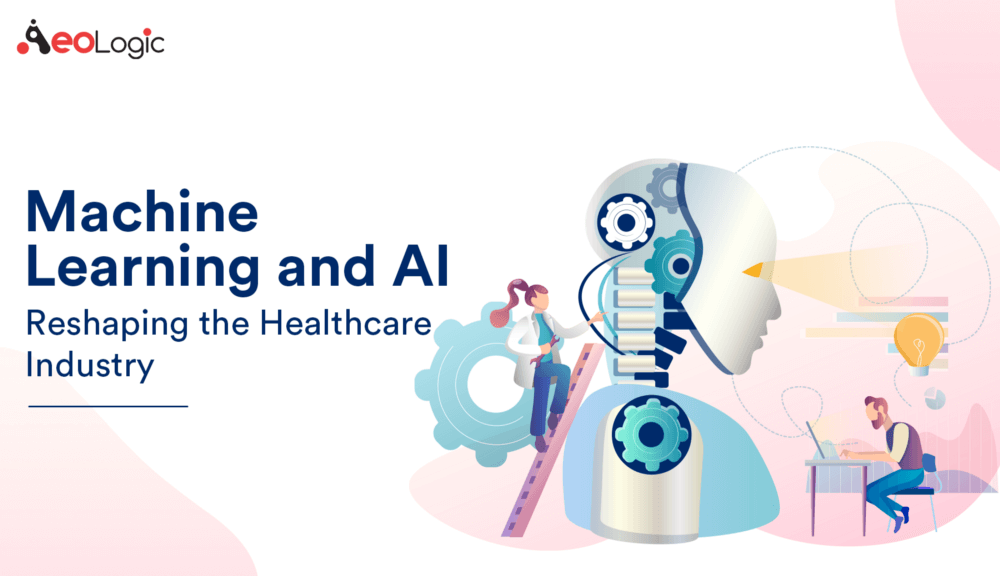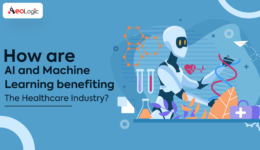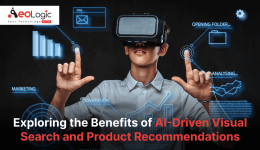The Healthcare industry is currently experiencing a massive digital transformation. There has been stable progress since the introduction of technology in this sector. Tech components like Machine Learning, Natural Language Processing (NLP), cloud computing, Artificial Intelligence, and the Internet of Things have helped in streamlining health care delivery and treating severe diseases.
What is AI and Machine Learning?
AI refers to multiple technologies that can be combined in different ways to sense, comprehend, and act with the ability to learn from experience and adapt over time. In basic terms, AI is a broad area of computer science that makes machines and computer programs capable of problem-solving and learning, like a human brain. AI includes Natural Language Processing (“NLP”) and translation, pattern recognition, visual perception, and decision making. Machine Learning (“ML”), one of the most exciting areas of AI, involves the development of computational approaches to automatically make sense of data — this technology leverages the insight that learning is a dynamic process, made possible through examples and experiences as opposed to pre-defined rules. Like a human, a machine can retain information and becomes smarter over time. Unlike a human, a machine is not susceptible to sleep deprivation, distractions, information overload, and short-term memory loss — that is where this powerful technology becomes exciting.
Applications in Healthcare
Applications of Artificial Intelligence in healthcare are endless. That much we know. We also know that we’ve only scratched the surface of what AI can do for healthcare. At the highest level, here are some of the current technological applications of AI in healthcare you should know about:
Drug Discovery
One of the primary clinical applications of machine learning lies in the early-stage drug discovery process. This also includes R&D technologies such as next-generation sequencing and precision medicine which can help in finding alternative paths for therapy of multifactorial diseases. Currently, machine learning techniques involve unsupervised learning which can identify patterns in data without providing any predictions. Project Hanover developed by Microsoft is using ML-based technologies for multiple initiatives including developing AI-based technology for cancer treatment and personalizing drug combinations for AML (Acute Myeloid Leukemia).
Medical Diagnosis
The use of Artificial Intelligence and Machine Learning to diagnose patients with specific diseases. Check out our roundup report from industry experts here. Also, a report AI platform was announced in March 2019 which is expected to help identify and anticipate cancer development.
Clinical Trials
Clinical Trials are, unfortunately, a real mess. Most clinical trials are managed offline with no integrated solutions that can track progress, data gathering, and drug trial outcomes. Read about how Artificial Intelligence is reshaping clinical trials here.
Pain Management
This is still an emergent focus area in healthcare. As it turns out, by leveraging virtual reality combined with artificial intelligence, we can create simulated realities that can distract patients from the current source of their pain and even help with the opioid crisis. Johnson and Johnson have created a simulated environment which used rules-based algorithms to train physicians in a simulated environment to get better at their job.
Diagnosis
One of the chief Machine Learning applications in healthcare is the identification and diagnosis of diseases and ailments which are otherwise considered hard-to-diagnose. This can include anything from cancers that are tough to catch during the initial stages, to other genetic diseases. IBM Watson Genomics is a prime example of how integrating cognitive computing with genome-based tumor sequencing can help in making a fast diagnosis. Berg, the biopharma giant is leveraging AI to develop therapeutic treatments in areas such as oncology. P1vital’s PReDicT (Predicting Response to Depression Treatment) aims to develop a commercially feasible way to diagnose and provide treatment in routine clinical conditions.
Smart Health Records
Maintaining up-to-date health records is an exhaustive process, and while technology has played its part in easing the data entry process, the truth is that even now, a majority of the processes take a lot of time to complete. The main role of machine learning in healthcare is to ease processes to save time, effort, and money. Document classification methods using vector machines and ML-based OCR recognition techniques are slowly gathering steam, such as Google’s Cloud Vision API and MATLAB’s machine learning-based handwriting recognition technology. MIT is today at the cutting edge of developing the next generation of intelligent, smart health records, which will incorporate ML-based tools from the ground up to help with diagnosis, clinical treatment suggestions, etc.
Better Radio Therapy
One of the most sought-after applications of machine learning in healthcare is in the field of Radiology. Medical image analysis has many discrete variables that can arise at any particular moment of time. There are many lesions, cancer foci, etc. which cannot be simply modeled using complex equations. Since ML-based algorithms learn from the multitude of different samples available on-hand, it becomes easier to diagnose and find the variables. One of the most popular uses of machine learning in medical image analysis is the classification of objects such as lesions into categories such as normal or abnormal, lesion or non-lesion, etc. Google’s DeepMind Health is actively helping researchers in UCLH develop algorithms that can detect the difference between healthy and cancerous tissue and improve radiation treatment for the same.
Outbreak Prediction
AI-based technologies and machine learning are today also being put to use in monitoring and predicting epidemics around the world. Today, scientists have access to a large amount of data collected from satellites, real-time social media updates, website information, etc. Artificial neural networks help to collate this information and predict everything from malaria outbreaks to severe chronic infectious diseases. Predicting these outbreaks is especially helpful in third-world countries as they lack crucial medical infrastructure and educational systems. A primary example of this is the ProMED-mail, an Internet-based reporting platform that monitors evolving diseases and emerging ones and provides outbreak reports in real-time.
The Future
The third arm of machine learning that has especially gotten a lot of attention lately is in Artificial Intelligence (AI), mostly implemented with what’s called deep learning. Self-driving cars, home assistants, and translation services are some applications of AI. This is the cutting edge in ML right now. In the 2–5 year timeframe, we will start to see more mainstream impact from these techniques. In healthcare, the first big use case is for image analysis in radiology and pathology departments. It’s possible that computers will learn to assess images with high speed and accuracy in the very near future. When the community is ready for adoption, we will be excited to provide these tools.
At AeoLogic Technologies, We combine our market research expertise across an array of technologies that help in building a better future. We’ve been carrying out qualitative and quantitative research projects for our clients for several years, establishing ourselves as the gold standard in reliable technical research.
For the last 8+ years, we have been giving Artificial Intelligence & Machine Learning based solutions for enterprises and governments across the globe.
Do you also have an amazing idea that can change the world? we’d love to hear it.






